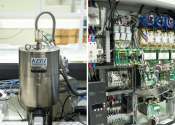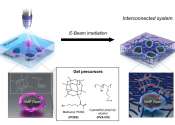Researchers develop a commercially viable and safe gel electrolyte for lithium batteries
Professor Soojin Park, Seoha Nam, a Ph.D. candidate, and Dr. Hye Bin Son from the Department of Chemistry at Pohang University of Science and Technology (POSTECH) have achieved a breakthrough in creating a gel electrolyte-based ...
Jun 24, 2024
0
51









